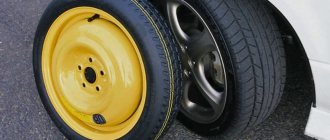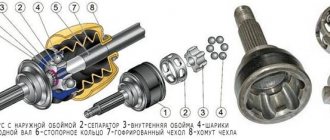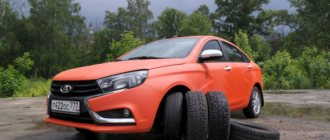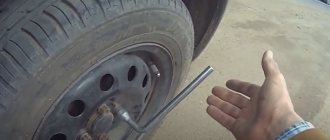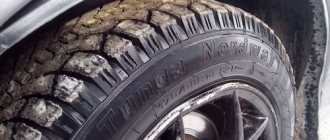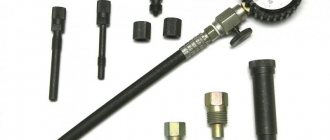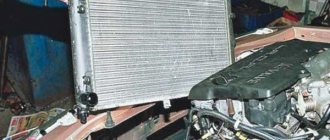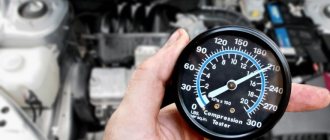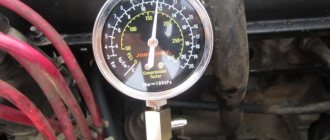Are you looking for what the M+S marking on car tires means? In this article you will learn how M+S is deciphered on tires and how to operate tires with this marking.
There are two general tire classification systems that help determine the traction characteristics of winter tires. All tires that have passed certain winter traction tests may be marked with a symbol on the sidewall of the tire. One is the M+S symbol (mud and snow) and the second is the mountain/snowflake symbol (3PMSF) . Both are based on standardized tire industry testing, however the degree of testing and grip levels required to qualify each symbol are very different.
While both symbols are useful indicators of what you can expect from a tire, it is important to understand the difference between them. This is especially important when choosing tires for your car, SUV or light truck in cold climates.
Each winter tire is marked M+S. It is also found on some summer tires, which many drivers classify as all-season tires. However, this is not entirely correct. For example, most car tires for SUVs or tires intended for sale in the American market are labeled M+C, but do not always meet the needs of drivers in winter conditions.
Let's look at what M+S on tires actually means.
What does M+S on rubber stand for?
M+S is an abbreviation for Mud+Snow, which literally translates from English as “mud + snow.” With this marking, the manufacturer informs the consumer that the tire provides better traction on mud and snow than a regular summer tire. But this does not mean that it meets the requirements for winter tires and can be used safely in winter.
Properties of rubber . The letters MS on the sidewall of the tires also indicate stronger grip on the road due to the use of softer rubber in the production; this factor minimizes such an unpleasant phenomenon as aquaplaning (full or partial separation of the wheel from the road surface). The level of rolling resistance also increases, providing more comfortable conditions during the trip.
There is only one small nuance: the MS designation, unfortunately, is not a symbol protected by law (any manufacturer can put it on the tire, next to the standard size, speed and load indices). So, the promised improved driving performance in snow and mud, which the ms marker denotes, may turn out to be only a “publicity stunt”. However, famous brands (Nokian, Bridgestone, Yokohama and other manufacturers who value their reputation) are responsible for each symbol indicating certain qualities of the tire and applied to its surface.
The specific rubber tread pattern marked MS allows them to move more confidently on snowy and wet roads, as well as cover significant distances off-road without any problems.
Reviews
I tried to ride on Michelin M+S tires for a test drive. I didn’t even expect that it would behave so well in slush and sleet. I was wondering if I should install these tires on my crossover when the winter tires become unusable.
Alexander
On the advice of a friend, I installed Yokohama M+S all-season tires on my car. In principle, I’m happy: the car doesn’t make much noise, and handles well on asphalt wet from melted snow. But it’s worth considering that there are no severe frosts in my region, and I almost never travel outside the city limits.
Sergey
A couple of years ago I bought M+S Cooper Discoverer tires for my Toyota Land Cruiser SUV and didn’t regret it at all. In my opinion, this is a worthy replacement for winter tires. The car drives well on wet and dirty asphalt without losing traction. But I wouldn’t use such tires for trips out of town on icy roads.
Igor
Seasonality of M+S tires
About 70% of car enthusiasts mistakenly believe that the MS marking usually refers exclusively to winter tires. This opinion may cause disappointment in purchasing this product, since what this marker means for a specific brand of tire is known only to its manufacturer.
In principle, initially this class of tires was aimed at operation in Europe, the climatic conditions of which are different from the conditions of Russian winters, and therefore its use as a set of tires for our cold season is possible only in two cases:
- Advanced Features . A 100% guarantee that the purchased tires can really be classified as winter tires is provided only by the presence next to the MS symbol of an additional sign in the shape of a snowflake (with a mountain in the background). This is exactly what ms winter tires mean, which means that they have been tested in conditions as close as possible to the Russian climate and have received approval from the Association of Manufacturers of the USA and Canada (authoritative organizations that place high demands on automobile tires).
- Operation in a metropolis . Roads in large cities of the Russian Federation in winter are not much different from European highways (the same slush, dirt, lack of an ice layer - thanks to the reagents), and therefore in these megacities it is quite possible to drive on MS tires even in cold weather. Despite the fact that the MS marking means improved tire performance when driving in both snow and mud - this is more likely to save the car enthusiast in the off-season, and not in the harsh winter (the class of all-season tires suits them more).
Who is suitable for all-season tires?
Reference. The main advantage of M+S tires is their ability to overcome the “winter mess”. For such weather conditions that make driving difficult, increased traction is necessary, which is what this type of tire has.
The excellent driving characteristics of all-season tires are useful in temperate climates , where in winter asphalt makes up at least half of the winter mileage. On such a road, the cost of expensive winter tires is not justified, and M+S tires are perfect for a safe, comfortable ride.
The excellent driving characteristics of M+S tires are highly appreciated in countries where the temperature rarely drops below -10 degrees and does not rise too high.
In cold climates, this tire can be recommended for drivers who rarely leave the metropolis. Indeed, in big cities there is practically no ice and snow drifts on the roads even in winter.
If you choose this type of tire, purchase products from reliable manufacturers who have been on the market for many years. Their tires undergo numerous tests and truly live up to their claims. The M+S ranking of the best tire manufacturers regularly includes brands such as Cooper Discoverer, Yokohama, Michelin, Continental, Pirelli, Nokian, Goodyear, Dunlop.
May be interesting: Tire storage
What is the difference between M+S and a snowflake - 3PMSF
Recognizing the need for a more relevant and useful measurement of true winter performance, as well as a way to differentiate all-season tires from winter tires. The Rubber Manufacturers Association (RMA) came up with the "Mountain/Snowflake" symbol - 3PMSF for winter tires. When you see this badge on the sidewall of the tire, you can be sure that it meets the more stringent winter traction requirements and has been rated as "heavy snow." This includes snowy, slippery and cold or freezing roads.
You can learn more about what 3PMSF means in this article.
Most all-season tires do not meet the "Mountain/Snowflake" symbol because the tread rubber on all-season and summer tires becomes hard at temperatures below 40°F. Only specially designed winter tires, select all-terrain light truck tires and SUV tires, and some of the "all-season tires" The latest generation meets the traction performance requirements of the strict snow rating for the Mountain/Snowflake symbol. One all-season tire with a mountain/snowflake symbol is the Nokian WR G3 Tire. Nokian WR G3 are tires that you can leave on your car all year round and still be sure of good traction.
Maximum safety on winter roads is ensured only by winter tires that have a generally recognized marking - a three-peak mountain with a snowflake. To obtain it, the tire must exceed an acceptable threshold for the “snow grip index” and guarantee the minimum required performance in winter conditions (which are regulated by the relevant regulations on “vehicle safety”).
Such tests are carried out by tire manufacturers themselves or third-party companies, based on the results of which a tire can be recognized as a winter tire, undergo certification and be allowed for sale.
In turn, for a tire to receive the M+S marking there are no requirements for its performance in winter conditions. A tire only needs to have good traction on snow and mud, but this does not say anything about its reliability of traction on ice, snow and asphalt at low temperatures. Formally, at temperatures below 7 degrees, the M+S tire works the same as any summer tire.
The M+S marking is applied to the following tire manufacturers:
Amtel, Barum, Bridgestone, Continental, Cooper, Cordiant, Dayton, Debica, Goodyear, Dunlop, Falken, Firestone, Fulda, General, Gislaved, Hankook, Kama, Kelly, Kleber, Kormoran, Kumho, Marshal, Matador, Maxxis, Michelin, Nitto, Nokian, Pirelli, Sava, Semperit, Tigar, Triangle, Toyo, Uniroyal, Yokohama, Rosava, Belshina.
Eventually:
The M+S marking indicates that the tire provides more traction in mud and snow than regular summer tires and is not necessarily safe for use in winter conditions.
Advantages and disadvantages of this rubber
Before purchasing all-season tires, it is advisable to find out what advantages and disadvantages they have.
Advantages of tires labeled M+S:
- Versatility. All-season tires are suitable for a wide range of weather conditions.
- Quiet ride. Due to the absence of spikes and a pronounced tread pattern, there is no noise coming from the rubber when driving.
- Increased softness compared to summer and winter models. The low degree of tire rigidity provides increased comfort while driving.
- Possibility of using one set of tires for each season. This significantly reduces the cost of seasonal tires and tire fitting services.
- Resistance to wear and tear due to adverse weather conditions ensures longer service life.
Carefully! While there are many advantages, all-season tires have a number of limitations and are not suitable for some weather conditions.
Disadvantages of tires marked with the M+S badge:
- M+S tires are definitely not winter or summer tires: they do not withstand climate extremes. The manufacturer recommends them as all-season, but they lose a significant part of their declared characteristics at temperatures below -7 and above +20 degrees.
- In hot weather, such rubber softens, resulting in increased fuel consumption.
- Poor traction on too wet roads.
- In cold weather, the M+S tire becomes dull and braking performance is reduced by more than 2 times.
- On a snowy road, due to the lack of a large tread, it can slip.
- The price of all-season tires is higher than that of summer tires.
A temperate climate is suitable for this type of tire, where it will serve for a long time without causing problems.
Useful to read: What is better in winter – Velcro or spikes
Myths
It is worth remembering that all-terrain tires are not a panacea. The letters do not mean that the rubber will always provide grip and a high level of flotation. At high temperatures, such wheels will “float” and wear out excessively, and at extremely low temperatures the mixture will still “steel”, which can lead to an increase in braking distance and a decrease in the level of grip. Of course, you can solve the problem yourself by wrapping traction chains around the wheels, but such a solution is far from ideal.
In all respects, universal all-terrain and all-season tires are inferior to specialized products. Therefore, it is necessary to pay special attention when driving on the roads, monitor the tire pressure and not get into the wilds.
American tire markings
American designations
In the United States, passenger car tires are labeled differently than in Europe and the post-Soviet countries.
For example, it may look like: 30 x 9.5R 16 LT
It can be decrypted as follows:
- 30 — external size (wheel diameter in inches);
- 9,5 — tire width (also in inches);
- R - radial intersection of cord threads;
- 16 — internal diameter (in inches);
- LT – what kind of transport is it suitable for? In this case, it is a commercial vehicle (LightTruck).
Types of tires
Any tire contains standard numbers and letters.
This marking tells about the size of the product, the date of manufacture, and the composition of the mixture. Based on this, the area of application of rubber and the circle of buyers are determined. Additional letters such as m+s, AS, 4S, TT, AW are added to the standard designations, and sometimes there are ZR or XL icons. Each combination indicates certain operating conditions of the rubber. If the symbols 4S or AS are present on the sidewall of the tire, this indicates that the wheels are “all-season” (4 Season or All season). The designations TT or AW indicate that the shoes are intended for any surface or any weather (“tous terrain”, “Any weather”).
Sometimes you can see other symbols on the bus. Wheels marked m+s make it clear that these tires can be used in snow or mud (“Mud+Snow”). These wheels have a different tread pattern, which is deeper and provides reliable traction off the asphalt. In addition, the rubber composition has been slightly changed in favor of versatility. This choice provides better travel comfort.
Summer tires
In approximately 20 percent of cases, the ms designation comes across the summer tire category. It differs from standard summer tires in having a more developed tread, which allows you to confidently cling to a wet or dirty surface, and also avoid hydroplaning when driving through water.
However, as temperatures drop, a sharp decrease in rubber characteristics can be observed. The fact is that the composition of the mixture is from harder varieties. Such a wheel feels great at high air temperatures, but quickly becomes rough in the cold. This means that the tires provide maximum grip on the road only in the warm season. Failure to comply with seasonality can lead to a sharp decrease in performance.
Winter tires
Winter tires, unlike summer tires, consist of soft varieties.
Thanks to this, they perfectly withstand low temperatures, maintaining their adhesion properties even when the thermometer is negative. At the same time, in warm seasons the wheels simply “float” without providing the proper performance. Such tires are indicated by the inscription m+s on the tires. As a rule, the winter tire icon is complemented by a snowflake or a symbol of a mountain and a snowflake. This designation indicates that the tire has received the approval of the Canadian rubber manufacturers and is approved for use in their climate. Considering some similarity with the Russian climate, wheels with the indicated icon can be used in Russian conditions.
If there is a 3PMSF marker on the wheels, then you should pay attention to that too. This is a 3pmsf code indicating compliance with extended requirements for driving on snow. This rubber has been tested according to the methods of EU countries and approved by local certification centers.
All-season tires
Many motorists prefer all-season tires. This category of wheels can provide traction in snow or mud, but only at near-zero temperatures. So it is necessary to use all-season tires only if the thermometer readings are appropriate.
This is interesting: What is the service life of summer tires?
Dry residue according to markings
When purchasing a tire, you need to carefully study its characteristics, manufacturer's recommendations and, preferably, tire tests.
MS marking does not mean at all that the tire will behave confidently on snow, much less on ice. Just like the 3PMSF (Three Peak Mountain Snow Flake) badge, that is, “mountains and snowflake,” does not guarantee that the tire is suitable for the climatic conditions in your area. When purchasing a tire, you need to carefully study its characteristics, manufacturer’s recommendations and, preferably, tire tests. Then your shoes will be appropriate for the weather, and the trip will be safer.
Choosing tires yourself
As we have seen, deciphering tire markings for passenger cars is not a difficult process. Knowing the nuances of tire designation will help you purchase not just the right one, but the best and highest quality set of all offers, without relying entirely on the advice of a seller who is not always experienced and honest.
Each vehicle owner is guided when choosing by his personal preferences and financial capabilities. The only rule for all car brands without exception is to choose tires that strictly comply with the manufacturer’s recommendations.
Date of manufacture
One of the key parameters is the tire release date. You need to look at it when buying a new set, not to mention a used one. It is not recommended to drive on tires for more than five to six years from the date of issue, although it is not prohibited either by law or by the manufacturers themselves. The date of manufacture is indicated by four digits in an oval. The first two are a week, the second two are a year. For example, 3119 represents the "cooking" of the 31st week of 2022.
Speed index
| Speed index | Q | R | S | T | H | V | W | Y | VR | ZR | ZR(Y) |
| Speed, km/h | 160 | 170 | 180 | 190 | 210 | 240 | 270 | 300 | >210 | >240 | >300 |
- What does a tire say about car problems? find out here.
Photo: Continental
Icons and letters on tires: deciphering all the symbols!
Which ones can be used in winter?
In winter, it is recommended to operate a car on tires with improved characteristics, since the likelihood of accidents during this period is much higher.
Depending on the region of your stay, you need to select the appropriate tires. Where the air temperature does not drop below -5 degrees, it is quite acceptable to use “all-season”. In places with more severe conditions - only “special” wheels.
In winter, you can use any type of winter or all-season tires that comply with regional legislation. But for complete confidence on the road, you should choose tires with the designation 3PMSF.
What tires are considered winter in Russia
In Russia, during the winter period (from October to April), only winter tires are allowed. They can be studded or non-studded. But in accordance with the Technical Regulations of the Customs Union “On the Safety of Wheeled Vehicles”, tires must be marked with a sign in the form of a mountain peak with three peaks and snowflakes inside it, as well as with the signs “M+S”, “M&S”, “MS”.
These icons indicate that the tire is approved for use and meets road safety requirements.
- Author: Alexey Vinokurov
Rate this article:
- 5
- 4
- 3
- 2
- 1
(0 votes, average: 0 out of 5)
Share with your friends!
